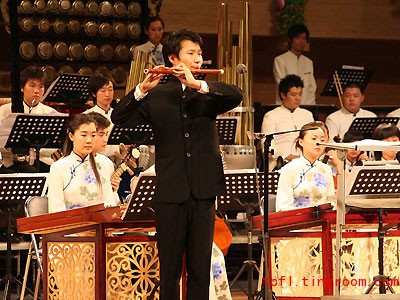The air makes the membrane vibrate, which can produce clear and smooth tones. Although the structure of the flute is simple, it has a history of more than 7,000 years.
About 4,500 years ago, designers began to make flutes with bamboo instead of bone. During the reign of the second emperor of the Han Dynasty in the 1st century BC, the flute was also called Hengchui, or literally ‘blowing horizontally.' From the seventh century on, the hole covered by membrane has been used. With the development of free verse of the Song Dynasty and the music of the Yuan Dynasty, the flute became the main part of the accompaniment, and was also indispensable in folk and ethnic dramas.

 English
English Japanese
Japanese Korean
Korean French
French German
German Spanish
Spanish Italian
Italian Arab
Arab Portuguese
Portuguese Vietnamese
Vietnamese Russian
Russian Finnish
Finnish Thai
Thai dk
dk